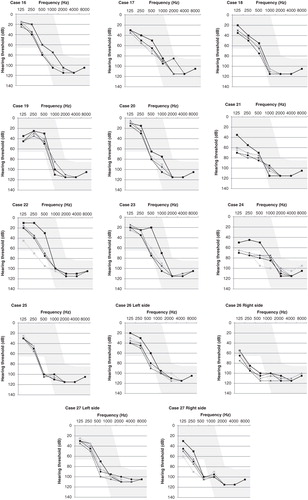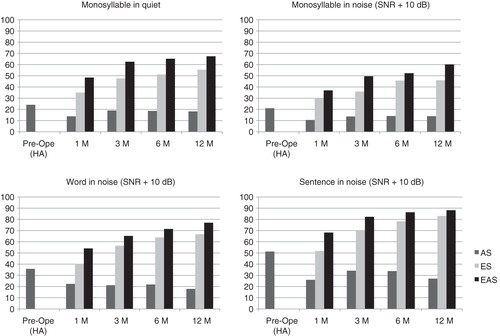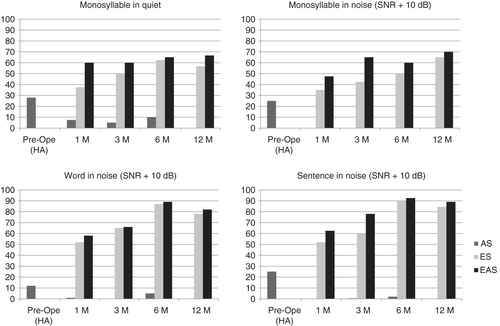Figures & data
Table I. Clinical features of cases undergoing electric acoustic stimulation (EAS).
Figure 1. Hearing preservation results of group 1 with FLEX24 electrode. The lines indicate preoperative, and 1, 3, 6, and 12 months postoperative audiograms. Shadow indicates the audiological criteria for electric acoustic stimulation (EAS) clinical trial (patient nos. 1–24 fulfilling the audiological criteria for EAS, nos. 25–27 not fulfilling the criteria for the clinical trial for EAS).
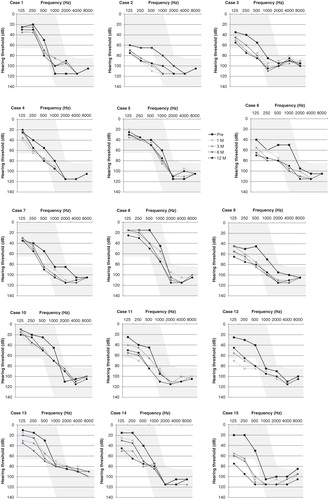
Figure 2. (A) Average audiogram of group 1. The lines indicate preoperative, 1, 3, 6, and 12 months postoperative audiograms. Note that good hearing preservation could be achieved. (B) Hearing level of group 1 with electric acoustic stimulation (EAS).
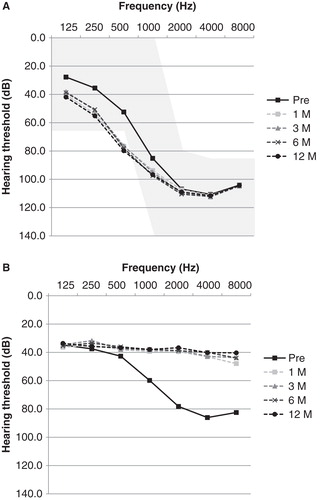
Table II. Average hearing thresholds of electric acoustic stimulation (EAS) patients in group 1.
Figure 3. Hearing preservation results of group 2 (cases with less residual hearing and receiving longer electrodes (no. 28 with standard electrode, nos. 29 and 30 with FLEXSOFT electrode). The lines indicate preoperative, and 1, 3, 6, and 12 months postoperative audiograms. Note that good hearing preservation could be achieved.
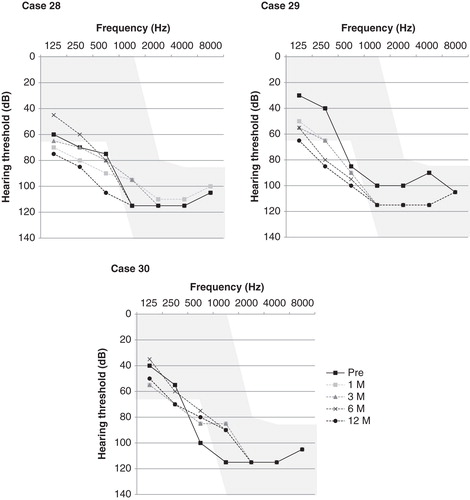
Figure 4. (A) Average audiogram of group 2. The lines indicate preoperative, and 1, 3, 6, and 12 months postoperative audiograms. Note that good hearing preservation could be achieved. (B) Hearing level of group 2 with electric acoustic stimulation (EAS).
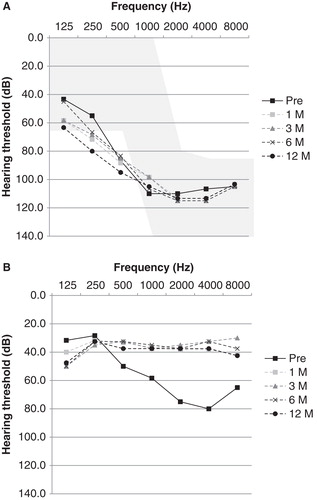
Table III. Average hearing thresholds of electric acoustic stimulation (EAS) patients in group 2.

